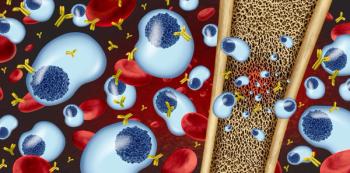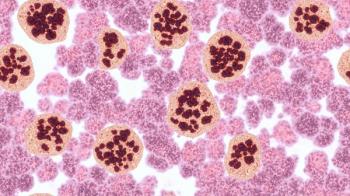
Providing Quality Care for Patients With Myeloproliferative Neoplasms
A panel of pharmacy experts explain what it means to provide quality oncology care for patients with myeloproliferative neoplasms (MPNs).
Episodes in this series

[Editor's Note: In this Practice Pearls program, Dr Haumschild incorrectly stated Dr Howe's title, so it was cut from the segment. Her title is Pharmacist In Charge of Progressive Pharmacy Care, Virginia Cancer Institute.]
Ryan Haumschild, PharmD, MS, MBA: Hello, and welcome to this Pharmacy Times®Practice Pearls program titled “Effective Implementation of Quality Care Programs for Patients with Myeloproliferative Neoplasms.” My name is Dr Ryan Haumschild, and I’m the director of pharmacy services at Emory Healthcare in the Winship Cancer Institute in Atlanta, Georgia. Joining me in this discussion are Dr Sharita Howe from Virginia Cancer Institute and Dr Jeff Gilreath, a clinical hematology/oncology pharmacy specialist at the University of Utah. We’re going to talk about several topics pertaining to the design and implementation of quality initiatives for myeloproliferative neoplasms [MPN]. We’ll discuss the components of quality oncology care in myeloproliferative neoplasms, the role of the pharmacist as part of a multidisciplinary team, and methods for supporting quality care. Let’s get started.
Let’s start this discussion focusing on the overview of quality initiatives for myeloproliferative neoplasms. Dr Howe, let’s start with you. In your opinion, what are some of the key components of oncology care for myeloproliferative neoplasms?
Sharita Howe, PharmD: Thanks, Ryan. That’s a great question. When we talk about MPNs, or myeloproliferative neoplasms, we’re really talking about 3 different diseases. We’re talking about polycythemia vera [PV], essential thrombocythemia [ET], and myelofibrosis, whether this myelofibrosis is post-PV or -ET or if it’s de novo in nature. These diseases have different goals of care and the treatment modalities can slightly differ. When we talk about some of the key components, especially in a community-based practice, we like to make sure that we’re having a patient-centered approach with our patients and that we make sure we’re balancing tolerability and efficacy of the medications or treatment modalities that we use.
I can’t speak to an academic setting, but in the community setting, when I speak with some of our patients, they’re overwhelmed. Not necessarily because of their disease, but because they’re coming into the cancer institute and seeing patients who may present sicker than they are. We have to make sure we’re taking the patient’s feelings into account. When we speak about MPNs, we need to make sure we’re having this patient-centered approach where the patients are part of this plan, and then we need to make sure we’re balancing assessing them physically as well as assessing their symptoms and for any sort of transformation, because these diseases are chronic and could potentially transform into a disease that’s more debilitating. Those are some of the key components, especially in a community setting.
Ryan Haumschild, PharmD, MS, MBA: I like your perspective, especially coming from the community setting. So much of this is patient-centered care and involves shared decision-making. How do you titrate those optimal outcomes while being aware of tolerability and some of that health equity that we think about? Because this is such a unique patient population who needs that patient-centered care. I’ll turn to you, Jeff, and get your input. When we think about patient-centered care, what do you think a patient would like to see from their oncology team for that optimal experience? Maybe speak from your academic background because we just heard from Sharita’s more community-based program.
Jeff A. Gilreath, PharmD: Sure. Building upon what Sharita said, patients are nervous and scared. They’re venturing into the unknown. This is a new disease. It’s complicated. They don’t know what’s in store for them. It’s important to work with the patient to level set, meet them where they are, understand what they know and don’t know, and then educate them from the ground up. In my clinic, as a clinical hematology pharmacist, I’m afforded a little more time than the physicians to sit down and educate the patients. I try to reinforce what the physician said and then fill in the gaps when they exist simply because of time constraints that the physician has. Patients identify with that education. It’s very hard to go out and find resources to learn about these very complicated diseases in a short amount of time.
Ryan Haumschild, PharmD, MS, MBA: They’re complicated, and coming up with ways to improve care is a challenge worth working toward constantly.
Transcripts edited for clarity.
Newsletter
Stay informed on drug updates, treatment guidelines, and pharmacy practice trends—subscribe to Pharmacy Times for weekly clinical insights.






















































































































































































































